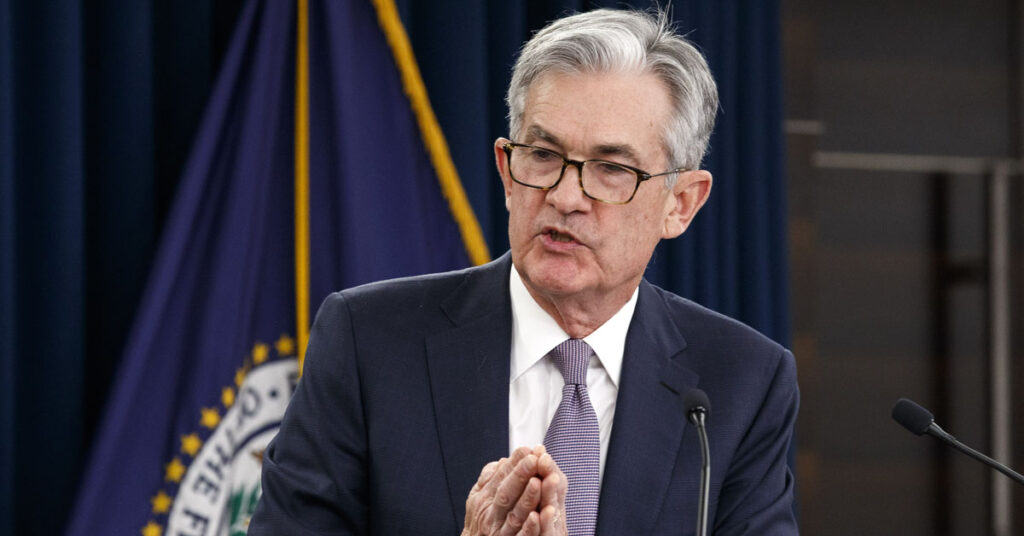In its ongoing effort to curtail rampant inflation, the Federal Reserve deployed its boldest salvo yet at the June meeting of its Federal Open Market Committee (FOMC), increasing its benchmark interest rate by 75 basis points.
The historically large rate increase is a move the central bank hasn’t made since 1994 — and Fed chair Jerome Powell signaled that another big move could be coming in a month. Powell indicated that another increase of one-half to three-quarters of a percentage point is likely after the July FOMC meeting.
The hike moves the federal funds rate target range to 1.5% to 1.75%. This month’s increase moves the effective federal funds rate to 1.52%, the highest it has been since February 2020, prior to the COVID-pandemic, when it was at 1.58%.
The increase was widely anticipated, even though economists had previously expected the rate hike to be only half a percentage point. But after an inflation report surfaced last week, which revealed widespread price growth on goods across the country and stoked growing concern, many began bracing for an even larger rate adjustment.
Powell called the 75-basis-point hike “an unusually large one,” adding that “I do not expect moves of this size to be common.” By telegraphing another similar increase in July, however, he said that the Fed will make decisions “meeting by meeting” and cited further headwinds to the economy at large.
“Inflation remains elevated, reflecting supply and demand imbalances related to the pandemic, higher energy prices and broader price pressures,” according to a statement issued by the Federal Reserve. “The invasion of Ukraine by Russia is causing tremendous human and economic hardship. The invasion and related events are creating additional upward pressure on inflation and are weighing on global economic activity. In addition, COVID-related lockdowns in China are likely to exacerbate supply chain disruptions. The [FOMC] is highly attentive to inflation risks.”
Ten of the 11 voting members of the FOMC voted in favor of the rate increase. The Fed now forecasts benchmark rates to grow to 3.375% by December and to 3.8% by the end of 2023 — big leaps from the 1.9% and 2.8% figures projected in March. This schedule, combined with a predicted jump of 75 basis points (bps) in July, implies a slowing to 50 bps increases, or possibly 25 bps, for the rest of the year.
The Fed also doesn’t forecast inflation to abate this year and anticipates unemployment growing to 3.7% by the end of 2022, higher than it had predicted in March.
Additionally, the Fed announced that it will continue reducing its holdings of Treasury securities and agency mortgage-backed securities, allowing up to $30 billion and $17.5 billion, respectively, to roll off its balance sheet from June through August. After that, the FOMC intends to raise the monthly roll-offs to $60 billion and $35 billion indefinitely starting in September.
Wells Fargo economists Sarah House and Michael Pugliese believe that June’s rate increase foreshadows more proactivity moving forward on the part of the Federal Reserve. The central bank has taken some criticism of late for not being more aggressive in combating inflation.
“Taking a step back, we believe today’s 75 bps rate hike marks an important inflection point in U.S. monetary policy,” they wrote in Wells Fargo commentary. “Numerous Fed officials have stated previously that monetary policy should be nimble in response to new developments and that the FOMC will do whatever it takes to reduce inflationary pressures. … After the inflation data came in hotter than expected, it appears the committee nimbly adjusted course in real time.
“Ultimately, the difference between 50 and 75 bps is somewhat small, but today’s hike boosts the Fed’s credibility and demonstrates that the door is open for similar adjustments at future meetings. This suggests to us a much more sensitive reaction function from the FOMC, and similar upside inflation surprises in the future very well may be met with equally aggressive upside surprises for the federal funds rate.”
Marty Green, principal of mortgage law firm Polunsky Beitel Green, said that even with rates rising, the hike should be a welcome one for mortgage lenders. It may help them expedite the path to a more stable market.
“It is clear in talking to mortgage company executives that the recent fluctuations in mortgage interest rates have increased the risks in an already challenging market and the belief that the sooner we get to a stabilized rate environment, even at elevated rates, the better it will be for the industry,” Green said. “The belief is that it will also restore a level of predictability for consumers so that they can more comfortably make their financial decision on a potential move to a new home.
“In an informal poll of our residential mortgage lending clients, responses were fairly evenly split between those predicting a 50 basis-point increase versus the higher 75 basis-point increase,” he added. “The more interesting part of their response was the heavy preference toward the larger rate increase, with one respondent hoping for a full (100 basis-point) increase.”








